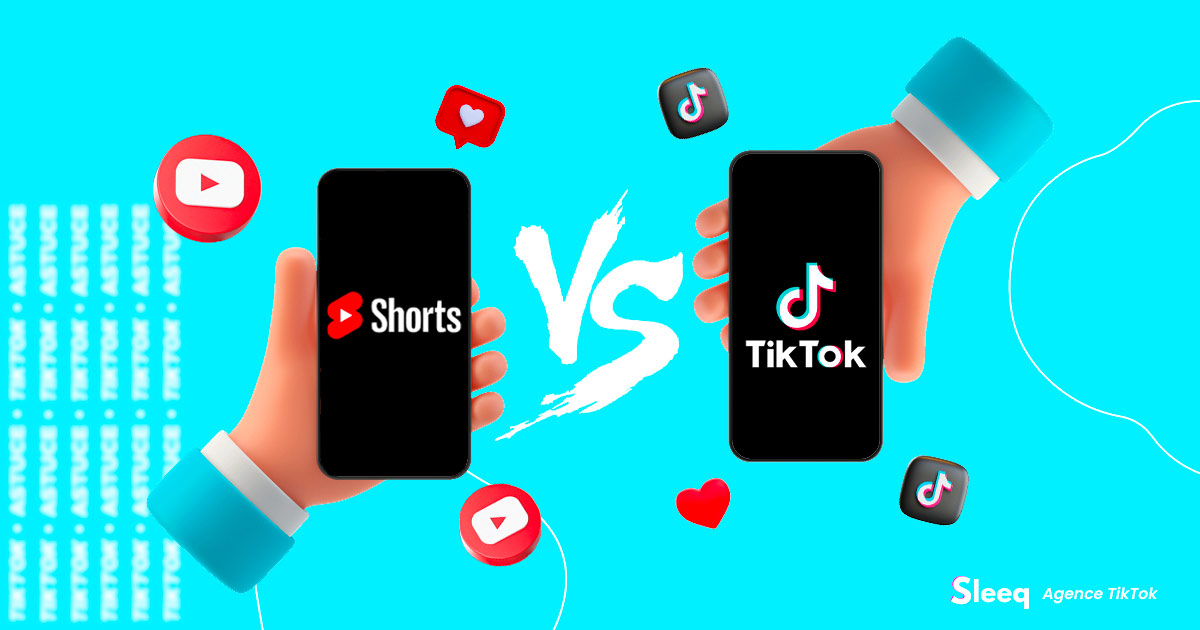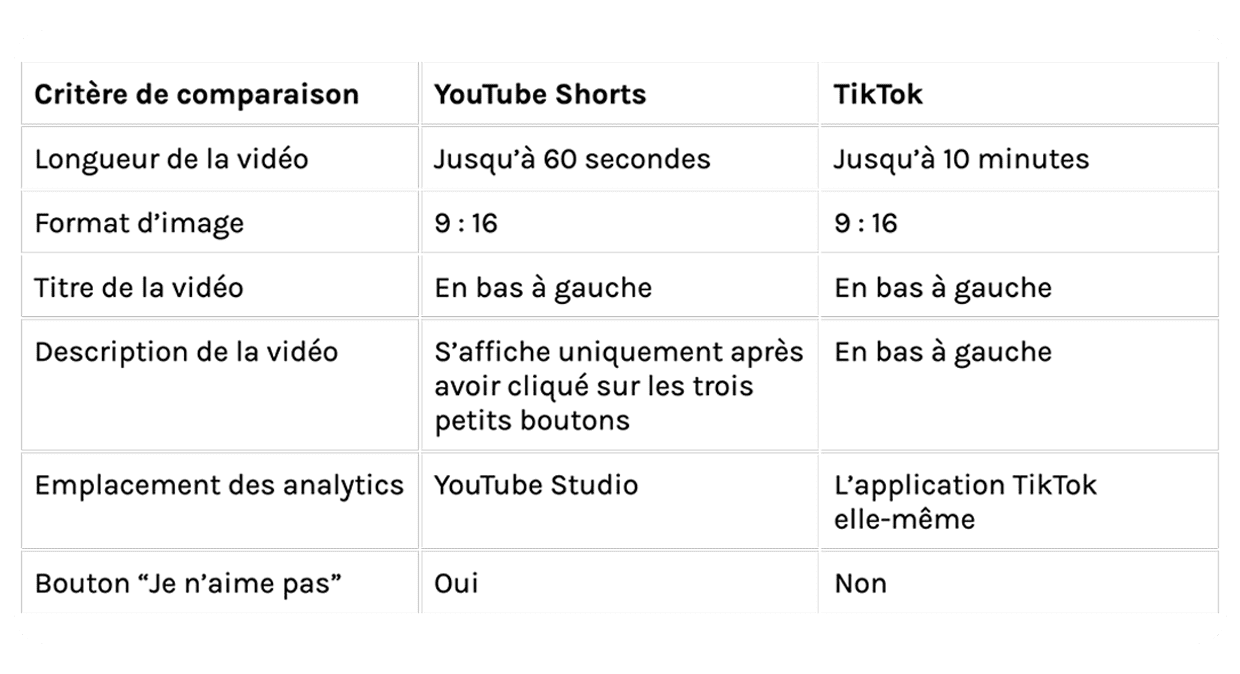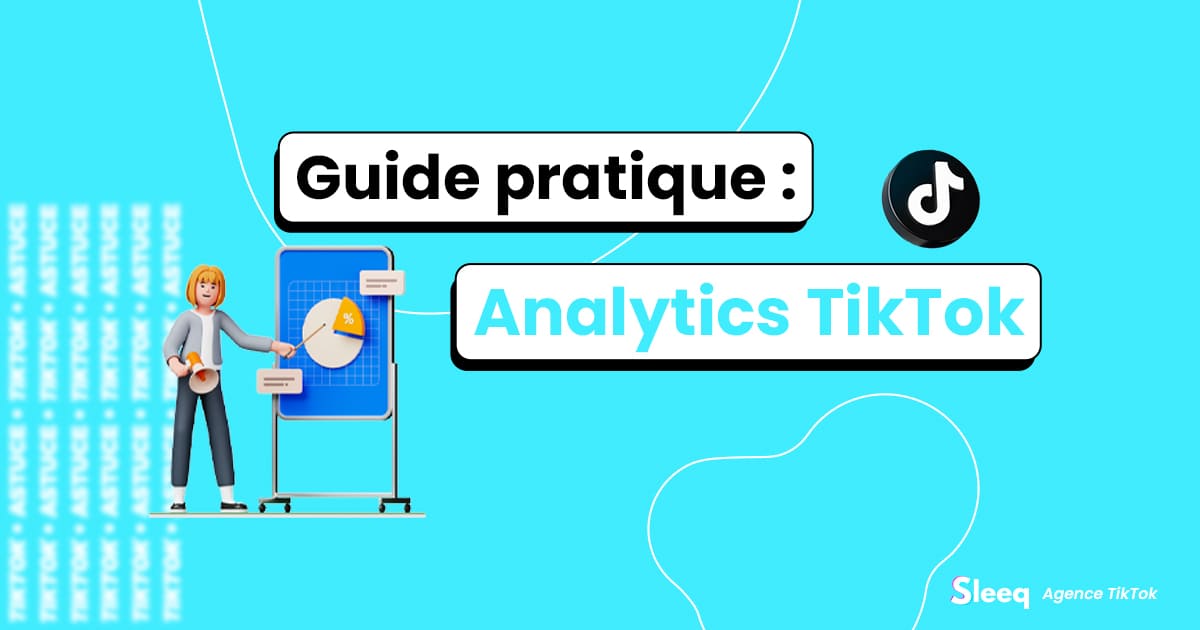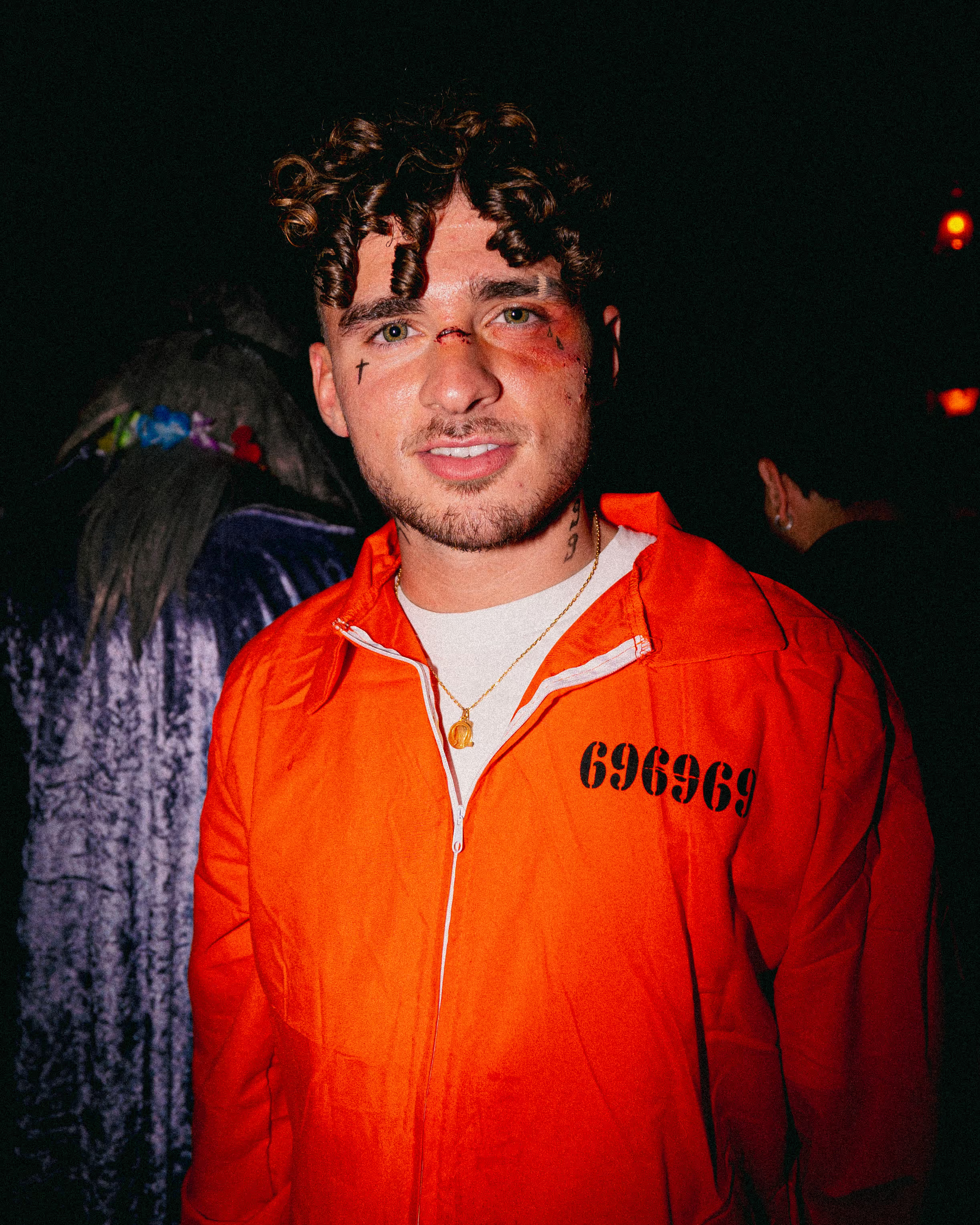Quelles différences entre YouTube Shorts et TikTok ?
Découvrez les différences entre les vidéos courtes sur YouTube Shorts et TikTok et choisissez les meilleurs formats à utiliser.
August 22, 2025

TikTok est rapidement devenu le réseau social de choix de la génération Z, non seulement comme une source de divertissement, mais aussi comme une nouvelle frontière de la découverte. Tout comme Instagram avec les Reels, YouTube n'a pas tardé à suivre les pas de TikTok.
En 2021, YouTube introduit "Shorts" en France, un format de vidéos courtes qui surprend par sa ressemblance avec celui proposé par TikTok.
Ceci pose un dilemme majeur pour les créateurs de contenu et les annonceurs : quelle plateforme choisir pour diffuser leur contenu et lancer leurs campagnes publicitaires ?
Chaque réseau social possède une audience distincte et propose des fonctionnalités uniques. Il est donc essentiel de choisir judicieusement en fonction de son public cible, de son secteur d'activité, de son image de marque et de ses moyens.
Dans cet article, nous allons comparer en détail ce que proposent ces deux plateformes de vidéo courtes, notamment en termes de fonctionnalités, d'engagement et d'options publicitaires. Cela devrait vous aider à décider où concentrer vos efforts marketing pour profiter au mieux du potentiel qu'offrent les vidéos verticales d'une durée courtes sur les réseaux sociaux.
YouTube Shorts est-il le nouveau TikTok ?
Il est essentiel de reconnaître que YouTube Short n'est pas simplement une réplique de TikTok. Bien qu'étant une extension de YouTube, Shorts possède sa propre identité qui se distingue nettement de celle du réseau social chinois. De manière ironique, alors que YouTube tente d'imiter le format de TikTok, TikTok s'essaie à des formats qui se rapprochent plus des objectifs traditionnels de YouTube, allant même jusqu'à multiplier la durée maximale de ses vidéos à dix minutes.
Par conséquent, il serait réducteur d'affirmer que "YouTube Shorts est le nouveau TikTok", car Shorts n'est pas l'essence centrale de la plateforme.
Penchons-nous dès maintenant sur les différences significatives entre les formats vidéo courts de TikTok et de YouTube Shorts :
TikTok vs YouTube Shorts : Les ressemblances et les différences
Dans cette partie, nous avons structuré notre analyse des deux réseaux sociaux YouTube Shorts et TikTok.
Retrouvez ci-dessous un tableau comparatif, récapitulant les points spécifiques de ressemblances et de différences.

Fonctionnalités de TikTok, mais pas de YouTube Shorts…
- Une fonction de réaction et de duo, permettant aux utilisateurs d'intégrer les vidéos d'autres créateurs de contenu à leurs propres comptes.
- Une fonction Q&A (questions-réponses), où les utilisateurs peuvent poser des questions que les créateurs sont invités à répondre en vidéo. Les créateurs de contenu ont également la possibilité de répondre aux commentaires.
- Un onglet de découverte qui facilite l'exploration des sons, des effets et des hashtags à la mode par les utilisateurs.
Fonctionnalités de YouTube Shorts, mais pas de TikTok…
- Un outil de planification qui aide les créateurs de contenu à publier leurs vidéos courtes au meilleur moment.
- L'option de sélection pour spécifier si leurs vidéos sont destinées aux enfants, ou si elles doivent être restreintes aux spectateurs de moins de 18 ans.
- La possibilité de modifier le contenu même après sa publication.
- L'option de "désinscrire" votre Short, ce qui signifie qu'il est accessible à quiconque possède le lien vers cette vidéo.
TikTok vs YouTube Shorts : La comparaison
1. Les vues et l’engagement
Avec son ancienneté, YouTube génère un trafic deux fois plus élevé que TikTok. Cependant, ce sont les vues et l'engagement qui retiennent l'attention des marques. D'après les données partagées par Google, YouTube Shorts a enregistré 6,5 milliards de vues quotidiennes dès son lancement aux États-Unis en mars 2021. En 2023, ce format atteint 30 milliards de vues par jour.
Malgré cela, TikTok reste le leader indétrônable en termes d'engagement et de rétention des utilisateurs. Par rapport à YouTube Shorts, qui a affiché les taux d'engagement les plus faibles, d'environ 0,48 % en moyenne, et à l'engagement moyen des Reels d'Instagram de 0,92 %, TikTok présente un taux d'engagement environ quatre fois plus élevé.
2. Le format de vidéo
YouTube Shorts et TikTok sont deux plateformes dédiées au partage de contenus vidéo courts. Leur interface utilisateur est relativement similaire, avec des vidéos qui défilent en plein écran pour une expérience immersive. Les utilisateurs ont la possibilité de faire défiler manuellement les vidéos pour passer à la suivante.
Cependant, plusieurs différences clés distinguent ces deux plateformes. La première différence notable concerne la durée maximum des vidéos ; Actuellement, les YouTube Shorts ne peuvent excéder 60 secondes, tandis que TikTok a récemment étendu la durée maximale à 10 minutes.
De plus, le type de contenu varie considérablement entre les deux plateformes. TikTok privilégie généralement un contenu spontané et authentique, qui capte l'instant présent. En revanche, les YouTube Shorts sont souvent des extraits de vidéos plus longues, où les utilisateurs consomment les contenus comme des teasers les invitant à visionner la vidéo intégrale à partir de laquelle le short a été extrait.
3. L’audio
TikTok et YouTube Shorts offrent tous deux la possibilité aux créateurs d'ajouter de la musique à leurs contenus à partir de leurs vastes bibliothèques audio. De plus, les utilisateurs ont la possibilité de visionner toutes les vidéos associées à un son spécifique directement depuis ces bibliothèques.
Cependant, YouTube Shorts semble avoir un avantage dans ce domaine. En effet, YouTube dispose d'une bibliothèque musicale extrêmement vaste et diversifiée, surpassant celle de TikTok. Cela permet aux créateurs de contenu d'intégrer des morceaux de grandes maisons de disques, telles que Sony, Universal et Warner, à leurs contenus.
Il est toutefois important de noter que l'audio joue un rôle beaucoup plus central sur TikTok qu'il ne le fait sur YouTube Shorts. En effet, les tendances musicales et audio sur TikTok sont souvent le moyen le plus rapide de devenir viral, alors que sur YouTube Shorts, la musique est simplement une des nombreuses options d'édition disponibles. Ainsi, bien que YouTube Shorts dispose d'une bibliothèque musicale plus vaste, l'importance de l'audio dans la création du contenu et l'engagement des utilisateurs peut être plus prononcée sur TikTok.
4. L’édition dans l'application
Les deux plateformes de vidéo courte offrent une multitude d'outils permettant aux créateurs d'éditer leurs contenus vidéos directement au sein de l'application. Par exemple, les deux plateformes permettent de modifier la vitesse des vidéos, d'ajouter des sous-titres, et bien plus encore.
Néanmoins, il est à noter que TikTok possède des fonctionnalités d'édition plus avancées. L'application dispose d'une riche bibliothèque de filtres et d'effets (tels que l'écran vert, la réalité augmentée, etc.). De plus, elle offre une grande variété de formats et propose de nombreuses options pour collaborer avec d'autres utilisateurs, comme le duo, les Q&A, et bien d'autres.
D'un autre côté, YouTube Shorts propose certaines fonctionnalités uniques qui peuvent séduire les créateurs. Parmi ces caractéristiques, on trouve comme cité ci-dessus, un outil de planification qui permet de choisir le moment de publication de la vidéo, une option pour restreindre l'accès aux mineurs, et surtout la possibilité de modifier la vidéo même après sa publication. Ces options peuvent donner à YouTube Shorts un avantage pour certains créateurs, en fonction de leurs besoins et préférences spécifiques.
5. Les analyses
TikTok et YouTube Shorts mettent tous deux à disposition des outils d'analyse pour évaluer la performance de vos contenus vidéos. Ces outils incluent le suivi du nombre de vues, des likes, des commentaires, du temps de visionnage, des partages, des impressions et de la portée.
Toutefois, il y a une différence en termes d'accessibilité à ces informations. Sur TikTok, vous pouvez consulter les analyses directement à partir de l'application. En revanche, pour accéder aux données d'analyse des YouTube Shorts, vous devez vous rendre dans votre "YouTube Studio".
Si vous souhaitez approfondir votre compréhension des analytics sur TikTok, nous vous recommandons de consulter notre guide dédié à ce sujet.

6. La publicité
L'application TikTok offre non seulement des opportunités de partenariats avec des influenceurs, mais également la possibilité de lancer directement des campagnes de publicité sur l'application, avec plusieurs fonctionnalités, telles que le Brand Take Over, Top View, le Hashtag Challenge ou encore les effets sponsorisés.
De son côté, YouTube propose également un outil pour lancer des campagnes publicitaires. Ces annonces, appelées Shorts Ads, sont des formats de 60 secondes maximum qui apparaissent entre deux vidéos. Tout comme sur TikTok, vous pouvez choisir votre objectif publicitaire, votre audience et votre système d'enchères sur YouTube Shorts. Cependant, YouTube Shorts ne propose actuellement qu'un seul format de publicité, rendant la plateforme moins flexible et créative que TikTok sur ce point.
Que choisir : YouTube ou TikTok ?
Idéalement, il est recommandé d'incorporer à la fois les deux réseaux sociaux, YouTube Shorts et TikTok dans une stratégie marketing. Chacune de ces plateformes offre l'opportunité de toucher un public distinct (la GenZ sur TikTok, les millénials sur YouTube), d'atteindre des objectifs spécifiques (la visibilité sur YouTube, l’engagement sur TikTok), et d'interagir de manière unique avec les utilisateurs.
Cependant, si vos ressources ne permettent pas de vous étendre à ces deux réseaux sociaux, nous vous recommandons de privilégier TikTok. Outre le fait qu'il génère un engagement plus important que YouTube Shorts, TikTok facilite le partage de contenu percutant et la création d'un lien fort avec sa communauté. Étant une plateforme encore relativement récente, les chances de viralité y sont également plus grandes.
Prêt à vous lancer sur TikTok et à mener des campagnes couronnées de succès ? Faites appel à notre agence !








.avif)




